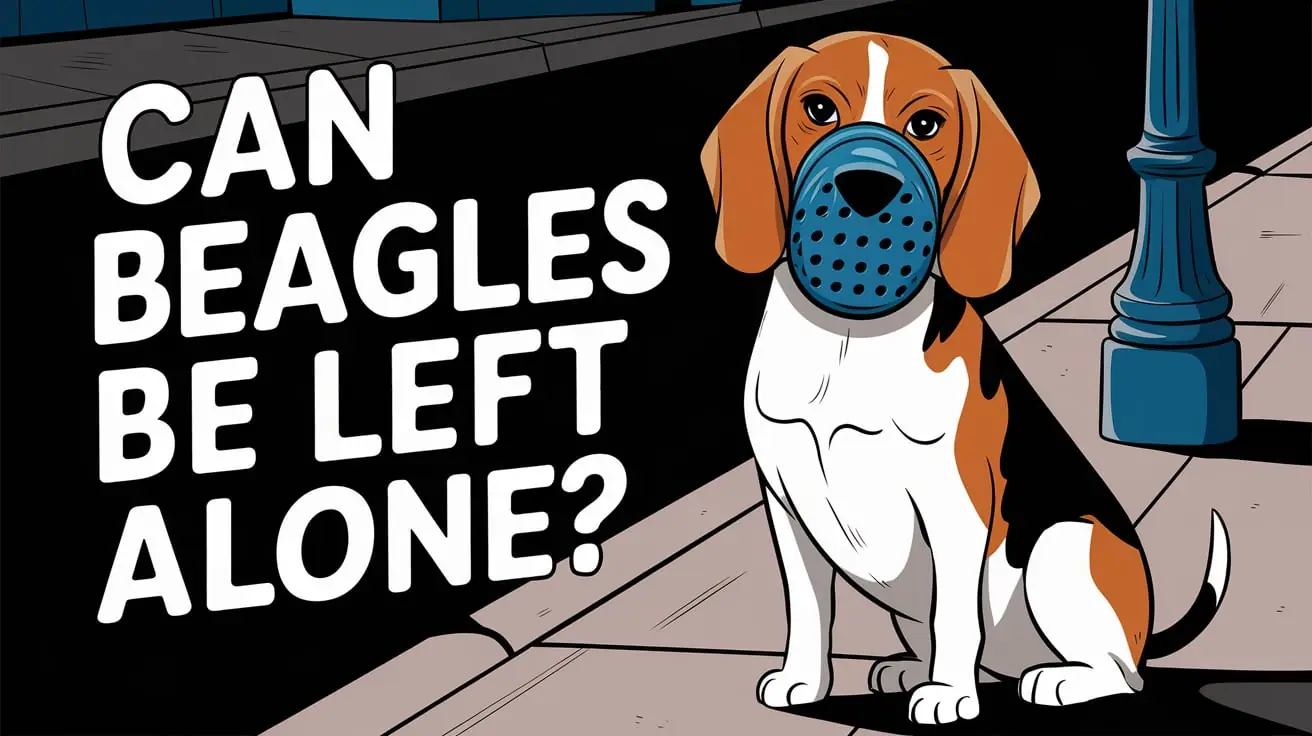Beagles are highly social dogs that thrive on companionship. Their love for being around people and other pets can make leaving them alone a challenge. However, with proper preparation and training, beagles can adapt to being left alone for short periods.
Beagles are known for their friendly, curious, and energetic personalities. They were originally bred for hunting, which means they have a strong pack instinct and don’t enjoy being alone. This can make it difficult for them to handle extended periods of solitude.
Adult beagles can typically be left alone for 4-6 hours, while puppies may need supervision every 2-4 hours. The duration they can handle depends on factors like their age, training, and socialization.
Younger beagles, especially puppies, tend to struggle more with being left alone. They require more attention, socialization, and supervision to prevent separation anxiety and behavioral issues.
CHECKOUT:- Essential Senior Beagle Care Tips: The Ultimate Guide
To help your beagle cope with being left alone, it’s important to:
- Create a safe, comfortable space with familiar items: Designate a room or area where your beagle can relax and feel secure, such as a crate or a quiet corner with their favorite toys and bedding.
- Provide engaging toys and activities: Keep your beagle entertained with puzzle toys, chew items, or interactive games that can help prevent boredom and destructive behavior.
- Establish a consistent daily routine: Develop a schedule for feeding, walks, and playtime to help your beagle feel more secure and less anxious during your absence.
- Use gradual desensitization: If your beagle is new to being left alone, start with short absences and gradually increase the duration over time. This can help them become more comfortable and confident when you’re not around.
If your beagle struggles when left alone, watch for signs of distress, such as:
- Excessive barking or whining
- Destructive behavior like chewing or scratching
- Changes in appetite or loss of interest in food
- Pacing, panting, or other signs of anxiety
These behaviors may indicate that your beagle is experiencing separation anxiety and could benefit from additional support.
If your beagle continues to show signs of separation anxiety, consider:
- Consulting a professional trainer: A certified trainer can provide tailored strategies and training techniques to help your beagle cope with being alone.
- Speaking with a veterinarian: Your vet can rule out any underlying health issues and offer recommendations for managing anxiety, such as medications or supplements.
- Considering a dog walker or pet sitter: Having someone come to your home to provide companionship and exercise during your absence can help alleviate your beagle’s separation anxiety.
Every beagle is unique, so pay close attention to your dog’s needs and adjust your approach accordingly. With the right preparation and support, your beagle can learn to enjoy their alone time.
-
How long can a beagle be left alone?
Adult beagles can typically be left alone for 4-6 hours, while puppies may need supervision every 2-4 hours.
-
What should I do if my beagle barks when left alone?
Consider addressing separation anxiety through gradual desensitization, providing engaging toys and activities, or seeking help from a professional trainer.
-
Can I use a dog walker for my beagle?
Yes, hiring a dog walker can be a great way to break up your beagle’s day and provide companionship and exercise while you’re away.
-
Is crate training beneficial for beagles?
Absolutely! Crate training can give your beagle a safe, den-like space, helping them feel secure when you’re not around.
-
How can I tell if my beagle is happy when left alone?
Signs of a happy beagle include a relaxed posture, a wagging tail, and a willingness to engage with toys or chew items. If they seem calm and entertained, they’re likely doing well.
Leaving your beagle alone can be a challenge, but with the right preparation and understanding, it can be a manageable situation. By creating a safe and enriching environment, establishing a consistent routine, and addressing any signs of separation anxiety, you can help your beagle adapt to solo time.
Remember, every beagle is unique, so pay close attention to your furry friend’s needs and adjust your approach accordingly. With patience and care, you can ensure your beagle’s well-being and happiness, even when you’re not around.
